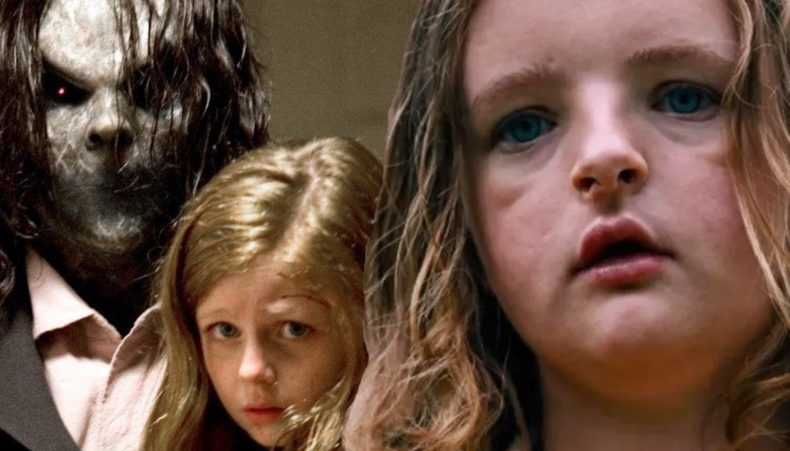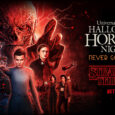Arguably two of the best horror movies to come out of the last decade have to be 2012’s Sinister and 2018’s Hereditary. Both movies offer a slow burn approach to unraveling their demonic, supernatural secrets. Both movies showcase strong performances from their hard-working casts, and both movies climax in such a bizarre way that ultimately, the viewer will walk away in head-scratching bewilderment asking the question was that good, or was it really bad?
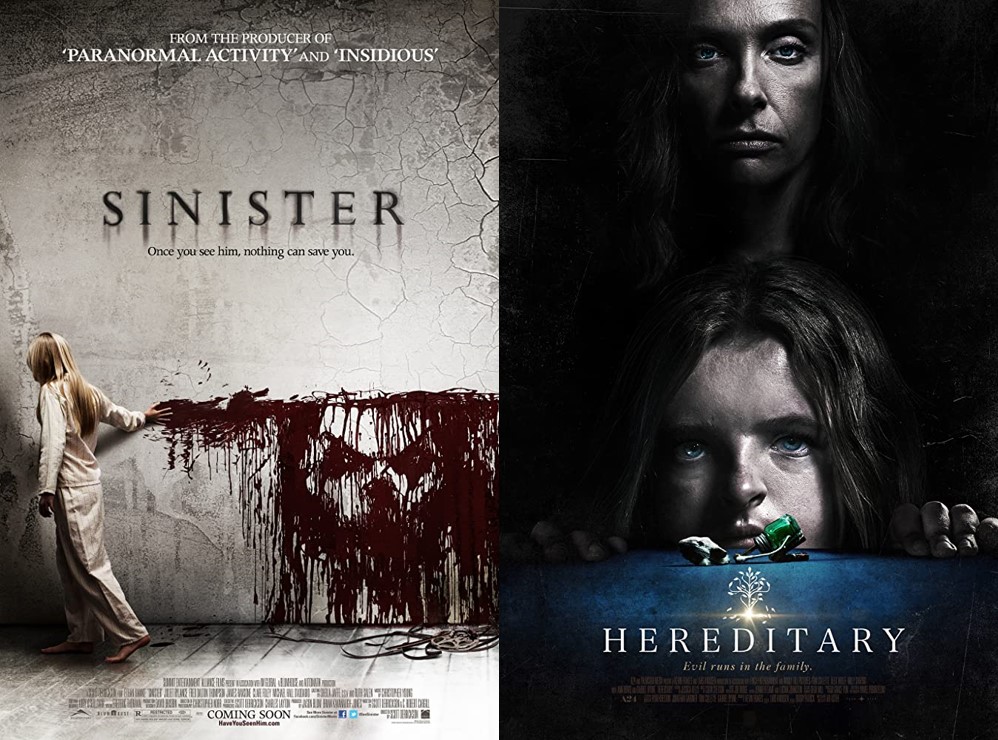
Sinister’s director Scott Derrickson was already well versed in the fantasy of fear working on Urban Legend Final Cut and Hellraiser Inferno before writing and directing the very effective 2005 possession movie, The Exorcism of Emily Rose. Fast-forward to 2020, Derrickson finds himself one of the most sought after directors given the run of the Disney playground with the Doctor Strange movies. But between Pinhead and Cumberbatch, Derrickson’s real breakthrough came with a Blumhouse production starring Ethan Hawke, Sinister. Co-written by C. Robert Cargill and based on a nightmare Cargill had after watching The Ring.
Sinister tells the story of Ellison Oswalt, a once successful true-crime writer played by Hawke. Who moves his family intentionally into a house where something terrible has happened, hoping he can exploit a tragedy and be inspired to write the next bestseller. So far… So…. Not such a good idea. Things really take a turn for the nasty, when mysterious boxes of Super 8 films are discovered in the attic. Let’s just say these aren’t your regular family home movies.
The premise for Sinister is strong, and the execution is slick. The home movies in question were actually shot on Super 8 cameras to lend a certain authenticity to the proceedings and are incredibly disturbing. Hawke’s performance as an obsessive writer slipping deeper and deeper into a dark hole is matched by the beautiful doom soaked cinematography and complimented by a creeping droning score. Creating a chilling movie that felt like a breath of fresh air when it was first released. All the key elements for my personal favorite type of horror movie seemed to be in play. But as I sat on the edge of my seat waiting for the next twist in the tale, something terrible happened…
You see, for me, horror is the build-up, it’s the suspense, it’s the unbearable feeling that you can’t escape an inevitable climax that will likely chew you up and spit you out. I love to be genuinely terrified as it is one of the most primal sensations we as humans can experience. So you can imagine my disappointment when about three-quarters of the way through Sinister, I knew which direction this story was going to go.
Up until this point, I have remained relatively spoiler-free. So now is the time if you are interested and have not seen Sinister, it’s best you go and watch before I delve deeper into the movie’s final act.

Derrickson and Cargill wanted to create their own Boogeyman poster boy for Sinister and initially were toying with what sounds style-wise like a cross between the Babadook and Johnny Depp’s Willy Wonka. This look for the villain may have tipped things into an unintentionally comedic realm. So after scouring the Internet for images using the keyword Horror in the search bar. Cargill and Derrickson came across a picture entitled ‘Natalie.’ Offering a conceptual design credit and five hundred dollars to the photographer of Natalie. Bagul was born. Also known as Mr. Boogey, Bagul is supposedly an ancient demon that possesses children, making them carry out terrible deeds in his name. Bagul is not based on any ancient demons but a creation specifically for the movie using different elements from documented demonology. The climax of the movie sees Oswalt’s daughter drug him, her mother, and brother so that she can murder her parents while filming the execution, which will then be added to the Super 8 archive carrying out Bagul’s orders.
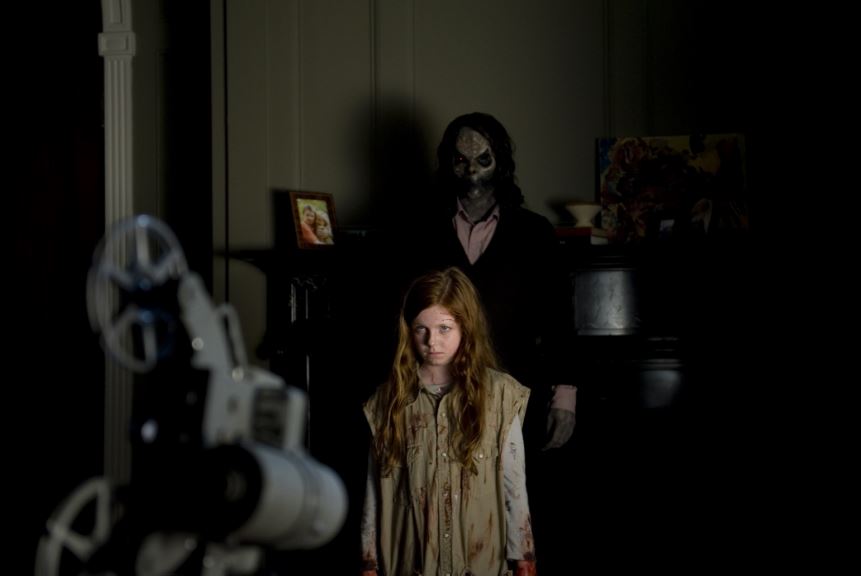
In my opinion, the final act of Sinister plays out in a familiar way with murderous, ghostly children popping up and way too much Bagul being glimpsed. Sinister is best when it sticks to the shadows; the ending feels like it was written deliberately to offer closure but also the sense that Bagul could return. Herein lies the problem. We have seen this sort of ending in commercial horror films, time and time again. For a movie that so frequently gives fresh takes on traditional horror elements, the ending feels like a cop-out. How much more effective would it have been if after Oswalt is drugged, we cut to black and then to a new family who comes into the possession of the Super 8 films? If, while watching these haunted movies, we learn the fate of Oswalt and his family through a next family doomed to repeat the cycle? Or even better we are left unsatisfied with the question, what happened to the author and his family. This would allow an audience’s mind to come to their own conclusions and, from my point of view, would be a far more memorable ending than the one we were given, which seems to be generic and in a very Hollywood way try and introduce the next big horror franchise. Incidentally, Sinister 2 was released in 2015 and was nowhere near as successful as its predecessor. Still rumors swirl of a Insidious (another big Blumhouse franchise) and Sinister crossover with a working title of Insinister, it seems we might not have seen the last of Bagul and his penchant for horrific home movies just yet.
In 2018 Ari Aster’s feature film debut premiered at Sundance, and word quickly spread that Hereditary was one of the must-see horror movies not only of the year but the decade. I heard about the film in February of that year. I quickly started to follow its progress, viewing the trailers, and reading what I could find to add to the anticipation of eventually seeing it. In June, I got my chance and attended an opening night screening to see if, indeed, it lived up to the hype. I was not disappointed.
Like Sinister Hereditary floats my genre boat. Telling the story of Annie Graham played by a pretty fantastic Toni Collette and her family, husband, Steve (Gabriel Byrne) son, Peter (Alex Wolffe), and daughter, Charlie (Milly Shapiro). The family finds themselves in the aftermath of the death of Annie’s mother. Dark family secrets unravel, and slowly the family has torn apart before our very eyes, leading to one of the craziest cinematic conclusions I have experienced in a long time. Aster takes a slow burn clinical approach to his movie-making. A student at the American Film Institute and a devotee of the big screen since his first experience inside a cinema with Warren Beatty’s Dick Tracy. It was Aster’s short films that allowed him to make the jump to larger-scale feature presentations after they picked up a lot of recognition on the festival circuit.
Again Hereditary is a movie that works best with what we don’t see. The shadow work throughout is amongst the best I have ever experienced in a darkened movie theatre. The performances from the cast are all worthy of award recognition, Collette showing in several scenes why she may be one of the most underrated actors of her generation. Alex Wolffe is the closest thing the movie has to a hero, really giving his all, playing an incredibly emotionally draining character. Milly Shapiro is a striking presence and turns the creepy factor up to eleven. Gabriel Byrne is the glue that binds the family and the film together, the glue that slowly starts to melt as the film plays out, leading to a third act that seems to hold nothing back.
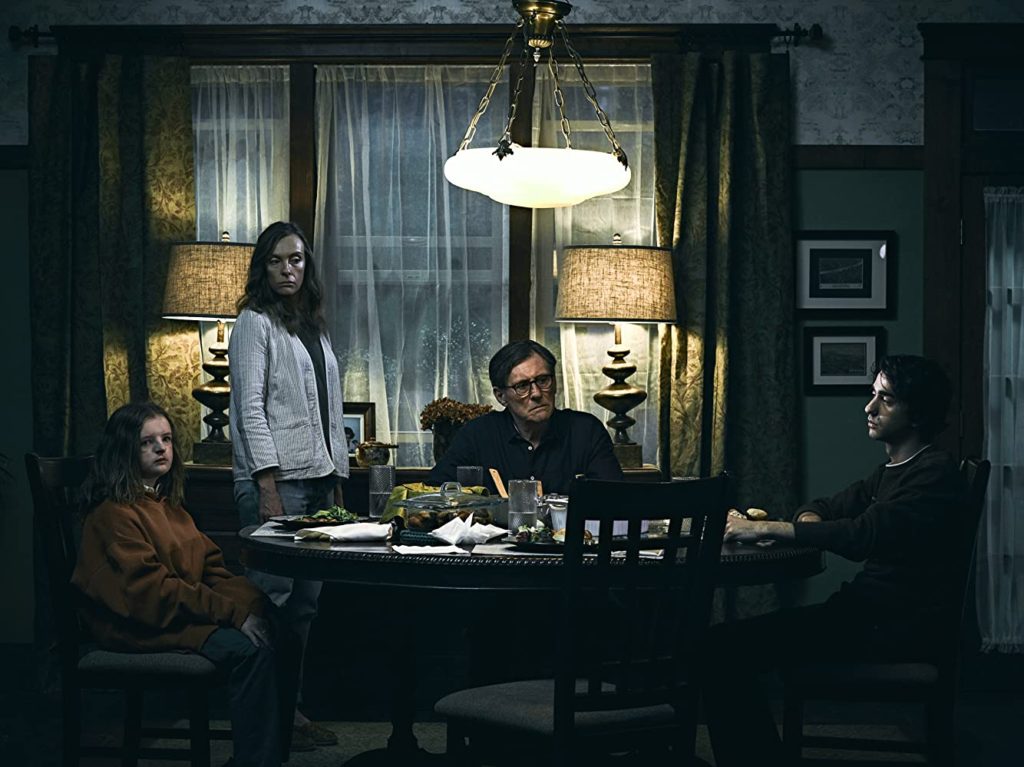
Again if you have yet to see Hereditary, beware of spoilers before you read on….

I came out of my initial viewing of Hereditary with a huge smile on my face. Watching the movie with a packed audience, I felt I had understood the movie better than the rest of the uncomfortable shocked attendees that surrounded me. One of the most upsetting moments in the film is the demise of Charlie. Based on the trailers, Charlie had seemed to be an integral part of the film, so at around the halfway point, when she is abruptly taken out of the story, everybody in my screening gasped and seemed to hold their breath all the way until the final act.
The last fifteen minutes of the movie are truly bizarre, featuring some of the most beautifully disturbing imagery ever committed to film. It’s also in this final fifteen minutes that the audience around me started, at last, to release their breath, to laugh uncomfortably, and whisper with their friends. It seemed to me that all the tension the movie had built up was finally being released. I wasn’t sure if this was intentional on the director’s behalf? I didn’t dislike the ending initially. I did feel that this pressure release was needed because the movie genuinely constructed such an incredible uneasiness that given a more subtle ending might have sent viewers insane.
As I thought more about the film though I realized I felt cheated by this climax. I don’t need bells and whistles to indicate something is good. I just need it to be through lack of a better word…. good. When Toni Collete starts crawling around the ceiling in the film’s final few minutes, I like the rest of the audience was laughing to myself. All the tension was quickly evaporating, and all that was left seemed to be a tell-all, commercial closure which is going all out to satisfy the widest demographic of people possible. I get it. This is, after all, a film business. I can’t blame directors, producers, film studios for wanting their movies to be successful. I can blame them, though, for not giving audiences enough credit to understand their products.
In the case of both Sinister and Hereditary (which let me make clear in case this article has confused you… I really, really like) the audience is lulled into terrifying nightmarish stories that although they do not provide ‘happy’ horror endings, they do the next worst thing they provide satisfactory climaxes and allow us to return to our normal lives either forgetting about the films entirely or being left with a lingering sense of… that was a good film, but!


